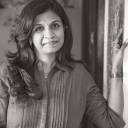“God made the integers; all else is the work of man.”
- Leopold Kronecker
Mathematics kindles extreme passions—either you love mathematics, or you hate it. I belong to the former. My happiest memories of school revolve around this subject. All through those years, I had never thought about the evolution of mathematics. It was only recently that this subject began to fascinate me. With every step in the rise of human civilisation, there has been an equal or higher growth in our understanding of mathematics. This is to be expected as mathematics itself has been the reason for the growth of civilisation in many ways. My research led me to discover the major role that our country played in the rise of modern mathematics.
India’s biggest gift to the world is the Indian Decimal system, with the notational placement values. When you couple this with India’s discovery of zero, it is evident that our country had changed the entire paradigm of how the world looks at numbers. The Greek and Roman number system were not evolved enough to deal with complex calculations and were unwieldy. The Indian decimal system, with a distinct symbol for each number from 0 to 9 along with a place value for each number, is so simple and feels so natural that we sometimes forget how important its invention was to the development of the world. India not only invented zero and the notation to show zero, it was the Indian mathematician, Brahmagupta, who first started calculating using zero. Till then, zero was just a placeholder to decide if a number was 20, 230 or 203.
When the Arabs conquered India, trade between Arab and India was flourishing. Indian mathematicians and accountants understood that the Arab number system was not evolved enough. The need for a common system was pressing. So, a group of Hindu mathematicians went to the court of the Caliph and explained and recited Brahmagupta’s work. Impressed, the Caliph ordered the work to be translated to Arabic. From there, the decimal system travelled to the western world through the works of the Italian mathematician, Fibonacci. Hence, it got the name, Hindu-Arabic numerals. Until this historical event, no significant mathematical progress happened in the western world.
“It is true that even across the Himalayan barrier India has sent to the west, such gifts as grammar and logic, philosophy and fables, hypnotism and chess, and above all, numerals and the decimal system.”
- Will Durant
From using his fingers to count numbers, man leaped on to using beads and knots, then to the tally system and then to writing down numbers. Initially, paper was expensive. So, accounts were maintained using tally sticks. (Which would seem virtually impossible to imagine in this computer-age!)
The mathematicians of yesteryears, who experimented with new ideas and moved away from the then established teachings, did not have it easy—kings misunderstood them, religious leaders threatened them, fellow-mathematicians ridiculed them—but these men and women carried on with their studies and research despite all the challenges that they faced. The only thing that kept them going was the love of knowledge, the desire to know more.
It was this same desire that kept me glued to all the enormous tomes about this topic for more than a year. It was surprising to find that many pioneers did not believe in talking about and taking credit for their achievements. Their desire to disseminate knowledge was much more important to these mathematicians than to claim ownership of ideas and discoveries. This was why Pythagoreans, as a group, credited Pythagoras, the man, for all their discoveries. Information about the life of Aryabhata is non-existent though we still have his treasured contribution to mathematics, Aryabhatiya.
“India was the motherland of our race and Sanskrit the mother of Europe's languages. India was the mother of our philosophy, of much of our mathematics, of the ideals embodied in Christianity... of self-government and democracy. In many ways, Mother India is the mother of us all.”
― Will Durant
Apart from reading a dozen books to understand this subject further, I had been scourging around museums learning from the visual evidence left behind by our ancestors. I am grateful and indebted to two great museums for clarifying and crystallizing my research. The first museum that added immense value to my research was the Chhatrapati Shivaji Maharaj VastuSangrahalaya at Fort, Mumbai. They held a special exhibition called ‘India and the World: A History in Nine Stories’; the stories of Harappan civilisation were a direct result of that visit.
The second museum is the Science Museum at London. After spending more than a year researching about mathematics, zero and the Bakhshali manuscript, I had wanted to see that delicate mathematical text that was written on birch bark. However, it was at the University of Oxford, and featured nowhere in my itinerary during my London visit. It was serendipity that London Science Museum was running an exhibition, ‘Illuminating India: 5000 years of Science and Innovation’ and the Bakhshali manuscript was one of the prime exhibits. When I chanced on it at this unexpected place, I broke down. The worried museum staff and tourists surrounded me. Between the tears and gentle rubs, I told them all about it. For a few hours, I was the tour guide at the London museum. It was a moment that I will always cherish—explaining the greatness of our Indian mathematics to groups of enthusiastic and attentive foreigners.
My journey of writing about the history of mathematics was a journey of self-discovery too. Inspired by the lives of great mathematicians, I learnt to embrace the joy of labour; I learnt to let go of the results of my endeavours, and I learnt to never give up or give in to obstacles! I hope the readers find their reading journey as enjoyable as my writing journey was.


Comments